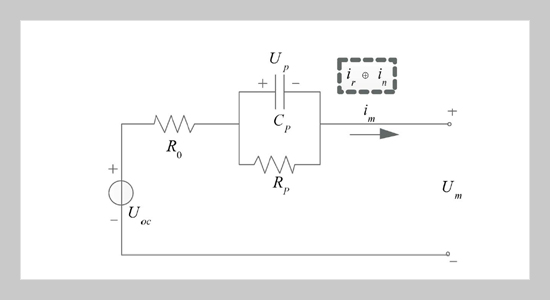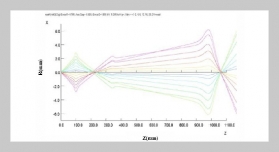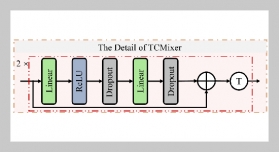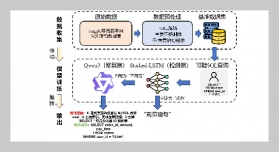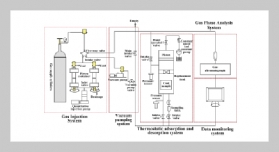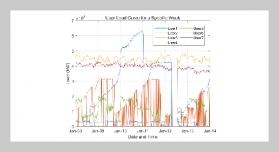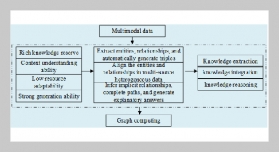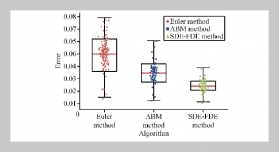REFERENCES
- [1] Shareef, H., M. Islam, and A. Mohamed (2016) A review of the stage-of-the-art charging technologies, placement methodologies, and impacts of electric vehicles, Renewable & Sustainable Energy Reviews 64, 403_420. doi: 10.1016/j.rser.2016.06.033
- [2] Saw, L., Y. Ye, and A. Tay (2016) Integration issues of lithium-ion battery into electric vehicles battery pack, Journal of Cleaner Production, 113, 1032_1045. doi: 10.1016/j.jclepro.2015.11.011
- [3] Yong, J., V. Ramachandaramurthy, K. Tan, and N. Mithulananthan (2015) A review on the state-of-theart technologies of electric vehicle, its impacts and prospects, Renewable & Sustainable Energy Reviews 49, 365_385. doi: 10.1016/j.rser.2015.04.130
- [4] Abada, S., G. Marlair, A. Lecocq, M. Petit, V. Sauvant-Moynot, and F. Huet (2016) Safety focused modeling of lithium-ion batteries: a review, Journal of Power Sources 306, 178_192. doi: 10.1016/j.jpowsour. 2015.11.100
- [5] Jaguemont, J., L. Boulon, and Y. Dube (2016) Characterization and modeling of a hybrid-electric-vehicle lithium-ion battery pack at low temperatures, IEEE Transaction on Vehicular Technolpgy 65, 1_14. doi:10.1109/TVT.2015.2391053
- [6] Basu, S., K. Hariharan, S. Kolake, T. Song, D. Sohn, and T. Yeo (2016) Coupled electrochemical thermal modelling of a novel Li-ion battery pack thermal management system, Applied Energy 181, 1_13. doi: 10.1016/j.apenergy.2016.08.049
- [7] Chaoui, H., C. be-Ekeocha, A. Mejdoubi, A. Oukaour, H. Gualous, and N. Omar (2016) State of charge identification of LiFePO4 batteries with temperature variations using neural networks, IEEE 25th International Symposium on Industrial Electronics 286_291. doi: 10.1109/ISIE.2016.7744904
- [8] Tian, Y., D. Li, J. Tian, and B. Xia (2017) State of charge identification of lithium-ion batteries using an optimal adaptive gain nonlinear observer, Electrochimica Acta 225, 225_234. doi: 10.1016/j.electacta.2016.12.119
- [9] Rahman, M., S. Anwar, and A. Izadian (2016) Electrochemical model parameter identification of a lithiumion battery using particle swarm optimization method, Journal of Power Sources 307, 86_97. doi: 10.1016/j.jpowsour.2015.12.083
- [10] Smith, K., C. Rahn, and C.Wang (2009) Model-based electrochemical identification and constraint management for pulse operation of lithium ion batteries, IEEE Transaction on Control Systems Technology 18(3), 654_663. doi: 10.1109/TCST.2009.2027023
- [11] Wijewardana, S., R. Vepa, and M. Shaheed (2016) Dynamic battery cell model and state of charge identification, Journal of Power Sources 308, 109_120. doi: 10.1016/j.jpowsour.2016.01.072
- [12] Duang, V., H. Bastawrous, K. Lim, K. See, P. Zhang, and S. Dou (2015) Online state of charge and model parameters identification of the LiFePO4 battery in electric vehicles using multiple adaptive forgetting factors recursive least-squares, Journal of Power Sources 296, 215_224. doi: 10.1016/j.jpowsour.2015.07.041
- [13] Zou, Y., S. Li, B. Shao, and B. Wang (2016) Statespace model with non-integer order derivatives for lithium- ion battery, Applied Energy 161, 330_336. doi: 10.1016/j.apenergy.2015.10.025
- [14] Lai, X., Y. Zheng, and T. Sun (2018) A comparative study of different equivalent circuit models for estimating state-of-charge of lithium-ion batteries, Electrochimica Acta 259, 566_577. doi: 10.1016/j.electacta.2017.10.153
- [15] Xiong, R., H. He, F. Sun, and K. Zhao (2012) Online identification of peak power capability of Li-ion batteries in electric vehicles by a hardware-in-loop approach, Energies 5, 1455_1469. doi: 10.3390/en5051455
- [16] Wang, Y., C. Zhang, and Z. Chen (2017) On-line battery state-of-charge identification based on an integrated estimator, Applied Energy 185, 2026_2032. doi:10.1016/j.apenergy.2015.09.015
- [17] Wu, H., S. Yuan, X. Zhang, C. Yin, and X. Ma (2015) Model parameter identification approach based on incremental analysis for lithium-ion batteries without using open circuit voltage, Journal of Power Sources 287, 108_118. doi: 10.1016/j.jpowsour.2015.04.037
- [18] Liu, C., W. Liu, L. Wang, G. Hu, L. Ma, and B. Ren (2016) A new method of modeling and state of charge
- identification of the battery, Journal of Power Sources 320, 1_12. doi: 10.1016/j.jpowsour.2016.03.112
- [19] Wang, B., S. Li, H. Peng, and Z. Liu (2015) Fractional-order modeling and parameter identification for lithium-ion batteries, Journal of Power Sources 293, 151_161. doi: 10.1016/j.jpowsour.2015.05.059
- [20] Feng, T., L. Yang, X. Zhao, H. Zhang, and J. Qiang (2015) Online identification of lithium-ion battery parameters based on an improved equivalent-circuit model and its implementation on battery state-of-power prediction, Journal of Power Sources 281, 192_203. doi: 10.1016/j.jpowsour.2015.01.154
- [21] Pan, H., Z. Lü,W. Lin, J. Li, and L. Chen (2017) State of charge identification of lithium-ion batteries using a
- grey extended Kalman filter and a novel open-circuit voltage model, Energy 138, 764_775. doi: 10.1016/j.energy.2017.07.099
- [22] Yu, Q., R. Xiong, C. Lin,W. Shen, and J. Deng (2017) Lithium-ion battery parameters and state-of-charge joint identification based on H infinity and unscented Kalman filters, IEEE Transaction on Vehicular Technology 99, 1. doi: 10.1109/TVT.2017.2709326
- [23] Zhang, C., W. Allafi, Q. Dinh, P. Ascencio, and J. Marco (2018) Online identification of battery equivalent circuit model parameters and state of charge using decoupled least squares technique, Energy 142, 678_688. doi: 10.1016/j.energy.2017.10.043
- [24] He, Y., X. Liu, C. Zhang, and Z. Chen (2013) A new model for state-of-charge (SOC) identification for highpower Li-ion batteries, Applied Energy 101, 808_814. doi: 10.1016/j.apenergy.2012.08.031
- [25] Zhang, C., K. Li, L. Pei, and C. Zhu (2015) An integrated approach for real-time model-based state-ofcharge identification of lithium-ion batteries, Journal of Power Sources 283, 24_36. doi: 10.1016/j.jpowsour.2015.02.099
- [26] Pei, L., C. Zhu, T. Wang, R. Lu, and C. Chan (2014) Online peak power prediction based on a parameter and state estimator for lithium-ion batteries in electric vehicles, Energy 66, 766_778. doi: 10.1016/j.energy.2014.02.009


